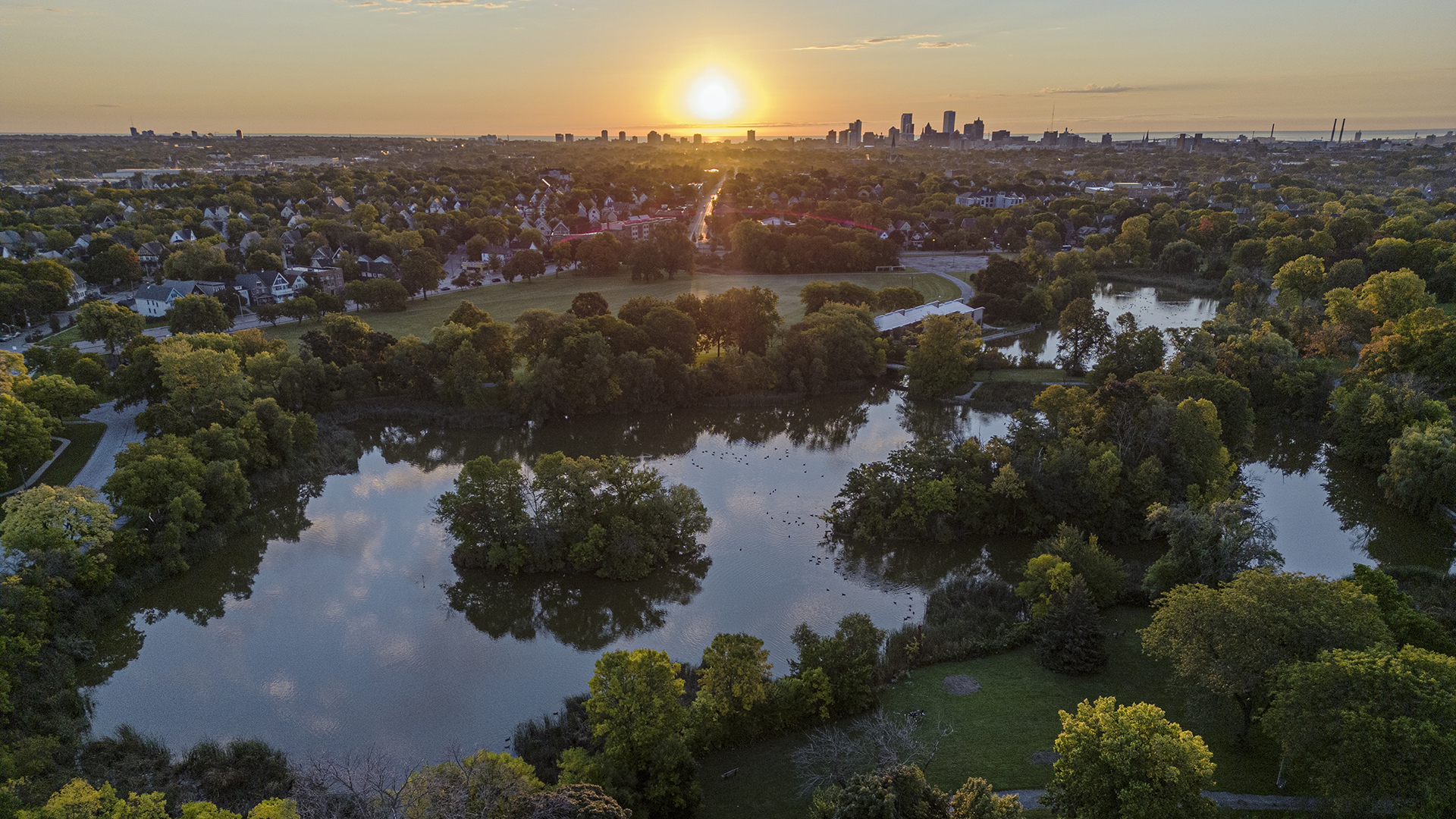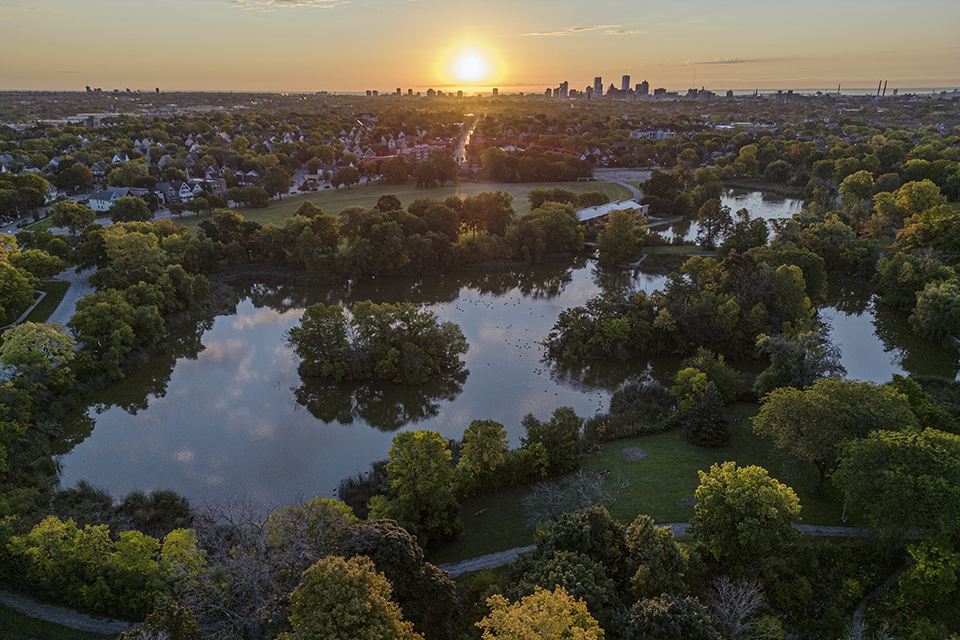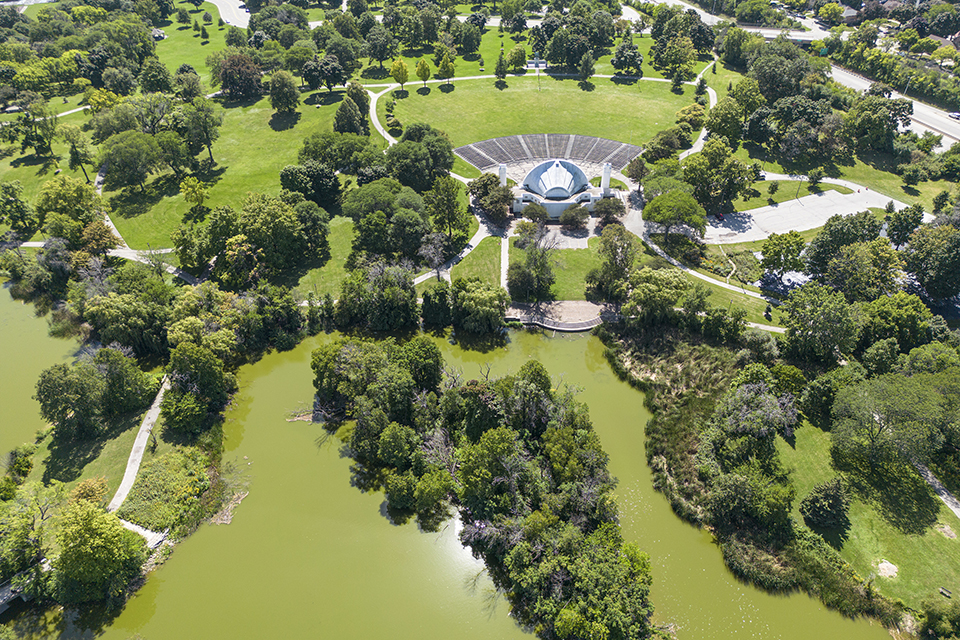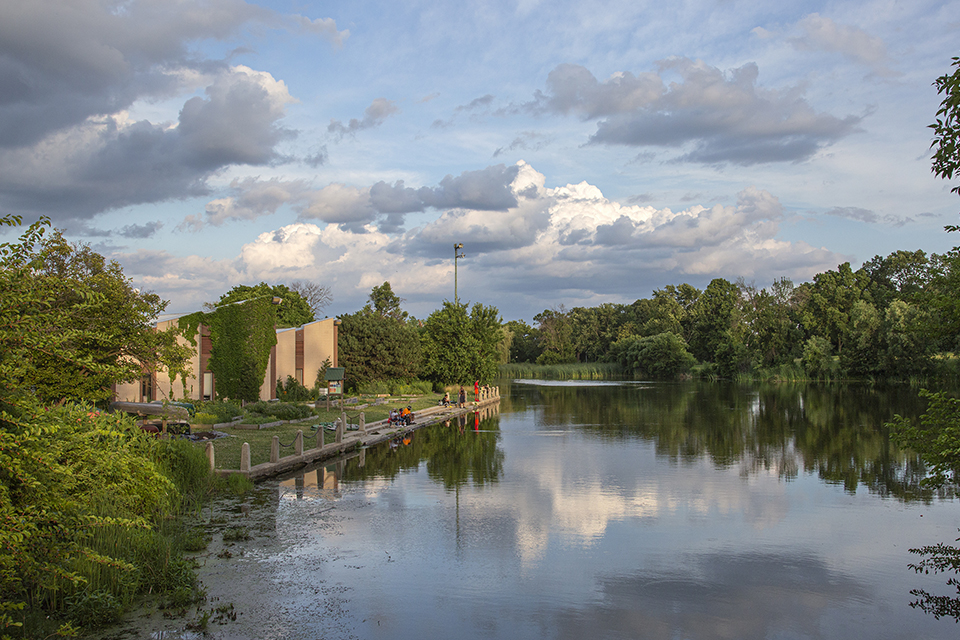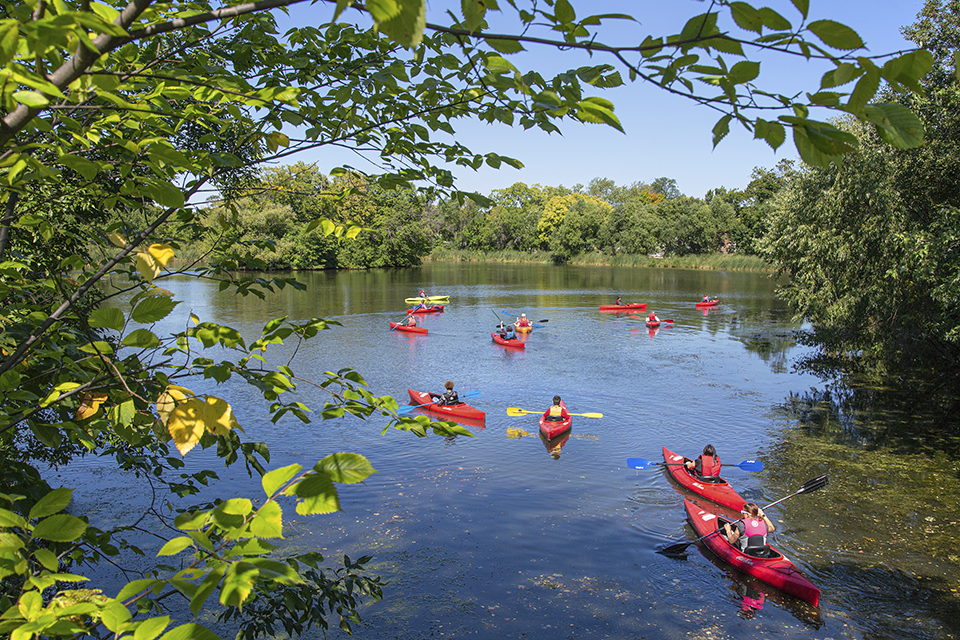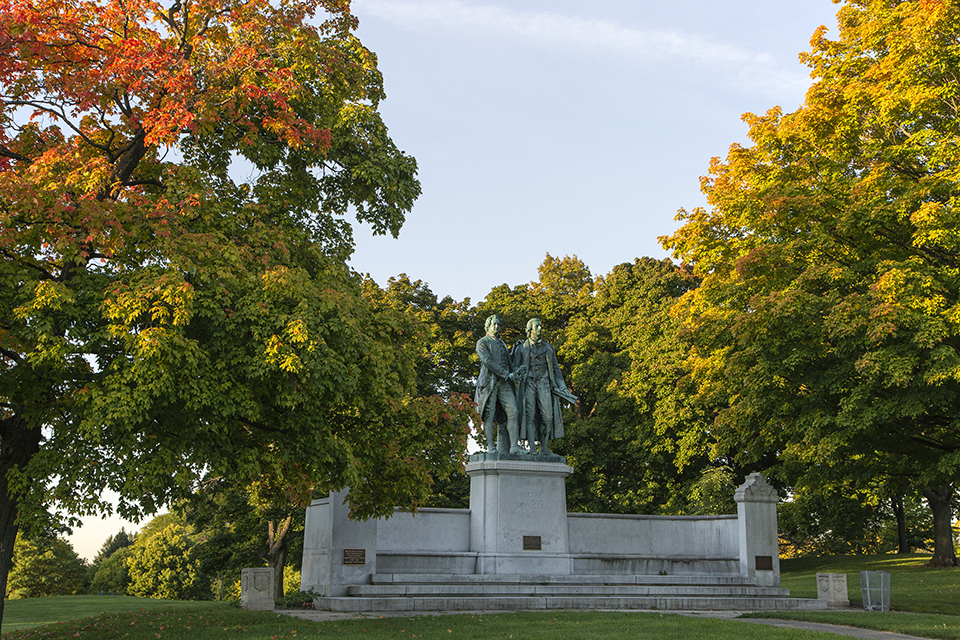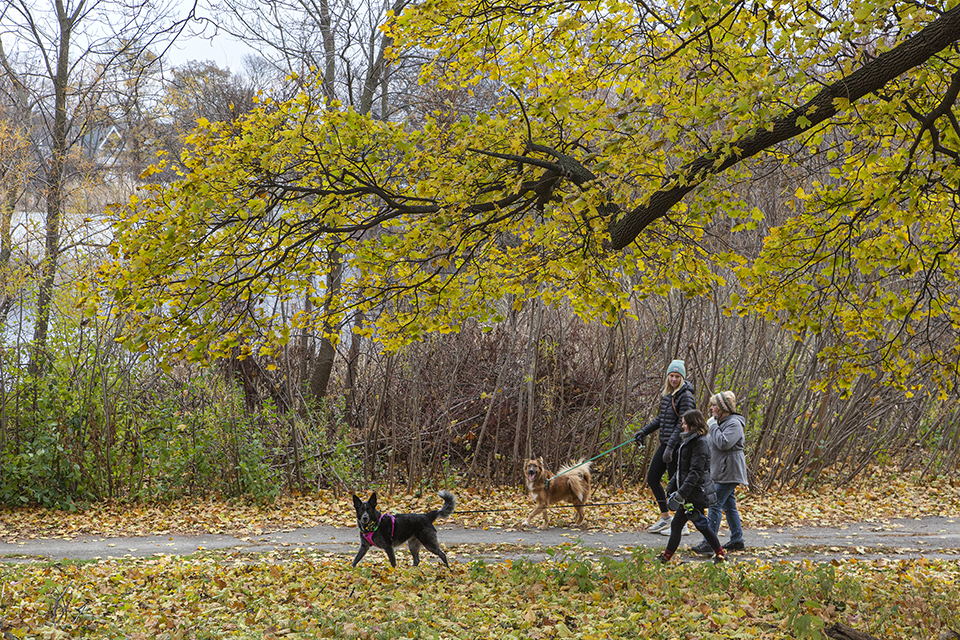Designed by Frederick Law Olmsted, Sr., in 1892, Washington Park was once a thriving urban park but has suffered in recent years from disinvestment and deferred maintenance. While eligible for local and perhaps national historic designation, the park’s historic landscape features remain at-risk as myriad local stewards and interest groups balance natural and cultural concerns in planning for the park’s future.
History
In the early 1890s the nascent Milwaukee Board of Park Commissioners engaged Fredrick Law Olmsted, Sr., to help select locations to establish urban parks, hiring him to design three of them. The landscape architect envisioned a park system akin to Boston’s “Emerald Necklace,” similarly calling the project a “Grand Necklace of Parks.” The commission acquired 125 acres, much of which was previously used for cabbage farming, between 40th and 47th Streets from Vliet Street to Pabst Avenue (now Lloyd Street) for West Park in 1891. While Olmsted, Sr., thought West Park was too far from the city center, he was attracted to its fifteen-acre native forest and rolling topography that, rising 130 to 180 feet above Lake Michigan, offered panoramic vistas. His design included a seven-acre lagoon in the northeast section of the park, a network of drives and walks, a pastoral meadow, a picnic area, a play area, and extensive plantings of trees and shrubs. Supervised by the Olmsted firm’s superintendent of planting, Warren Manning, over twelve thousand trees and shrubs, including ash, maples, and elms, were planted between 1896 and 1897. Trees were additionally planted on either side of all bordering streets. To accommodate animals donated by Louis Auer and Gustave Pabst, Olmsted, Sr., laid out a “deer enclosure” in the southwest corner of the park, which soon evolved into a zoo.
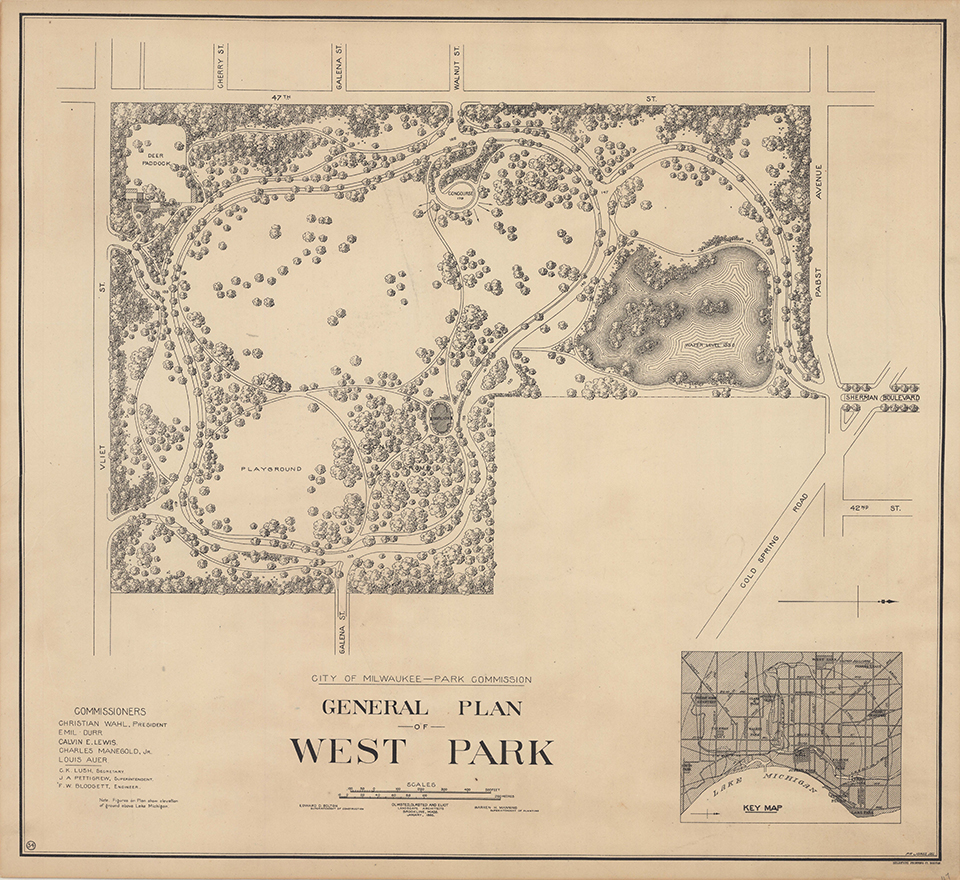 General Plan of West Park, Milwaukee, Wisconsin, 1895. Image courtesy of Frederick Law Olmsted National Historic Site.
General Plan of West Park, Milwaukee, Wisconsin, 1895. Image courtesy of Frederick Law Olmsted National Historic Site.
The park was renamed Washington Park in 1900 and with the addition of 23.2 acres in 1902 and 2.3 acres in 1906, expanded north to Lisbon Avenue and east to North 40th Street. Three years later Milwaukee’s first public golf course was established on a portion of the site and in 1908 the extant bronze Goeth-Schiller monument was erected in the park’s western section. Other athletic facilities constructed in the park included a one-mile-long horse racing track, lawn tennis courts, and a toboggan slide with spectator grandstands. An Art Deco bandshell designed by Fitzhugh Scott, grandly named the “Emil Blatz Temple of Music,” opened in 1938 and hosted a popular “Music Under the Stars” concert series. Washington Park Neighbors, an all-volunteer group, has been organizing weekly community concerts during the summer in recent years.
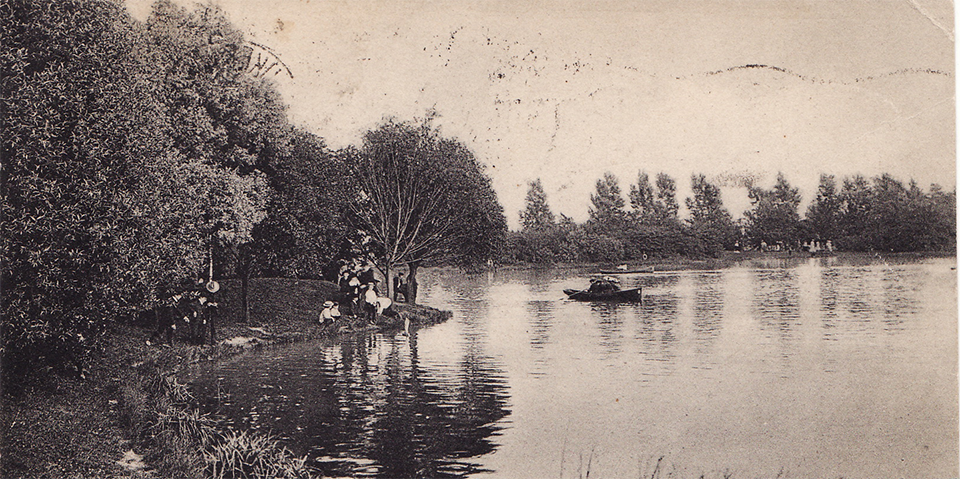 Postcard of Washington Park, Milwaukee, Wisconsin. Postcard published by the Wisconsin News Company.
Postcard of Washington Park, Milwaukee, Wisconsin. Postcard published by the Wisconsin News Company.
Constructed from 1953 to 1955, a freeway (now called Highway 175) assumed the western edge of the park, cutting off access to the park for nearby residents, and also increasing noise pollution and vehicular traffic in the area. Unable to expand in that location, the zoo was relocated to its current site, approximately three-and-a-half miles to the southwest of the park, in 1968. The park and the surrounding neighborhood, both named Washington Park, suffered from disinvestment in the second half of the twentieth century and early 21st century. In 2000 Quorum Architects, Inc., prepared a “Master Plan for the Revitalization of Washington Park” for the Milwaukee County Department of Parks. Some recommendations were implemented; others have not been. Recently, organizations including the United Methodist Children's Services, Hmong American Friendship Association, Inc., and Near West Side Partners, have worked to revitalize the surrounding community. Since 2007, the Urban Ecology Center (UEC) has leased a former boathouse in the northeast portion of the park to offer environmental education programs, and more recently has leased some twenty acres of the park from Milwaukee County. The UEC wishes to expand the former boathouse, adding a second story. In 2022, Wisconsin’s Department of Transportation announced that it would study the potential to rebuild the stretch of Highway 175 as a boulevard, to help reconnect the park to all adjacent neighborhoods.
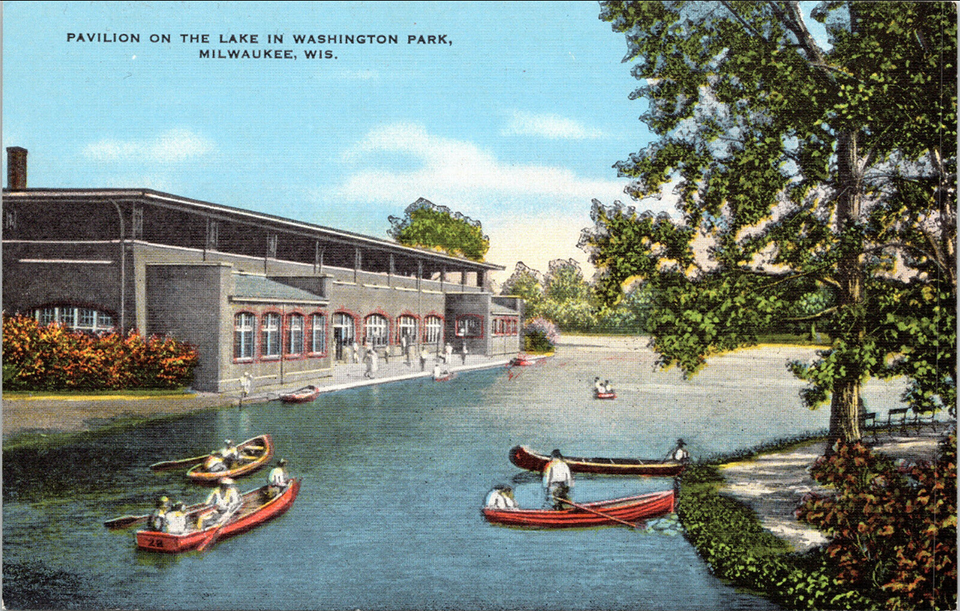 Postcard of Washington Park, Milwaukee, Wisconsin, 1944. Postcard published by E.C. Kropp Co.
Postcard of Washington Park, Milwaukee, Wisconsin, 1944. Postcard published by E.C. Kropp Co.
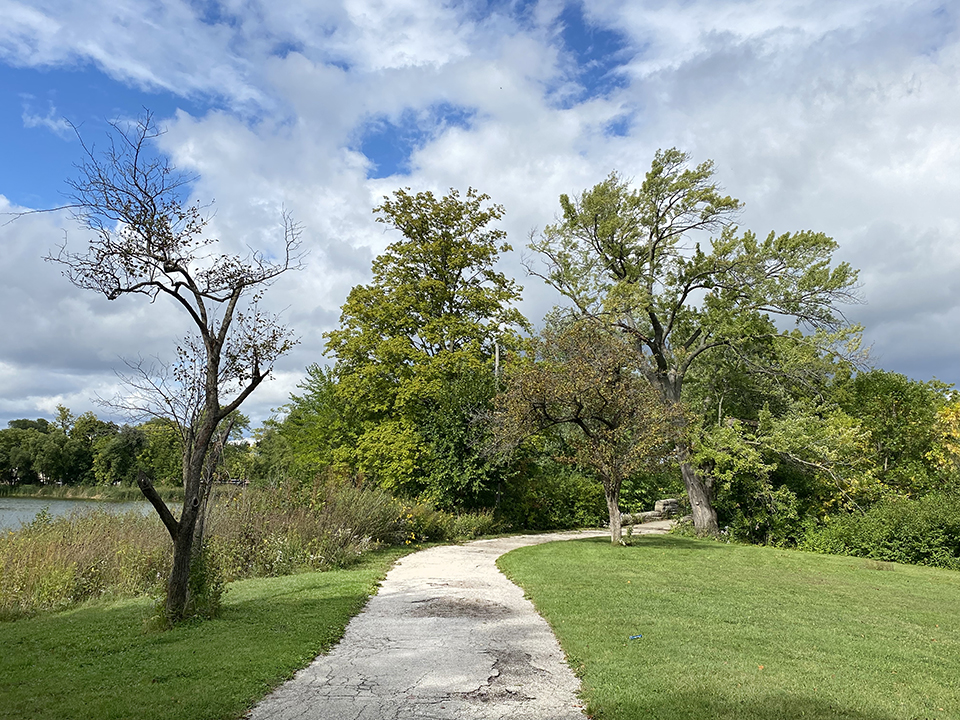
Photo by Eddee Daniel.
Threat
With the UEC responsible for some sections of Washington Park, efforts should be taken to guarantee that proposed and future alterations or development do not have an adverse effect on Olmsted’s design intent. Nearly 130 years after Fredrick Law Olmsted, Sr., planned the park, the landscape retains and showcases numerous signature design elements, which the 2000 master plan identifies: rolling topography with a system of curvilinear pathways, canopy trees planted in naturalistic patterns, and carefully orchestrated views and vistas over parkland and the lagoon. All current and future revitalization efforts for Washington Park would benefit from clear, shared overarching principles and guidelines to ensure that development balances both natural and cultural values for a significant work of landscape architecture that is likely eligible for listing in the National Register of Historic Places. The existing master plan acknowledges Olmsted’s design and references the original General Plan held in the Olmsted archives. Future holistic planning could manage change in Washington Park balancing natural and cultural concerns by engaging a multidisciplinary team with expertise in landscape history and historic preservation, and ecological systems (This balancing act has been in achieved in New York City, Louisville, Boston, and elsewhere and should be the goal for Washington Park). In December 2018 a proposal was submitted to the City of Milwaukee’s Historic Preservation Commission to nominate Washington Park as a locally designated historic site. The UEC, which unfortunately was not engaged early in the process, expressed concerns over the proposal, fearing that it might hinder future development. Designation remains on hold.
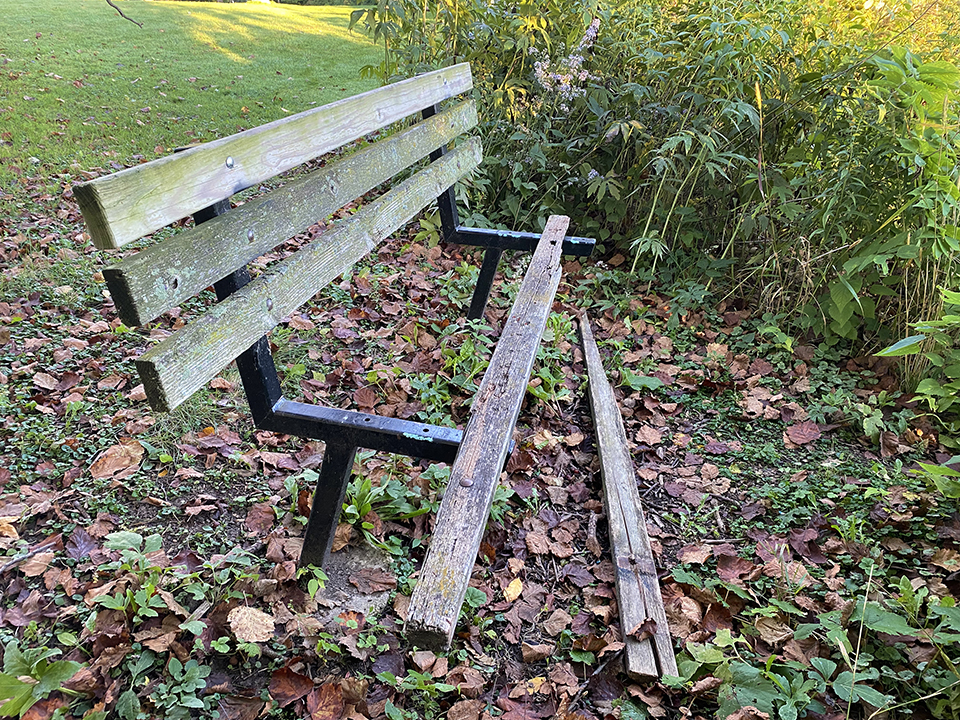
Washington Park, like the more than 200 other Olmsted-designed landscapes that have already been so recognized, is likely eligible for local and national historic designation. Such recognition would increase awareness of the park, its origins, and evolution over time, and help attract needed funding to rehabilitate the whole park and its declining infrastructure. Lake Park, another Olmsted-designed park in Milwaukee, was listed in the National Register of Historic Places in 1993 and has since received federal funding to rehabilitate its historic contributing features.
Washington Park is owned by Milwaukee County, which faces challenges in properly stewarding the park. Plagued by long-standing neglect, the park is in dire need of preservation and rehabilitation. Throughout the park, paths are cracked and broken, posing tripping hazards to pedestrians. In some sections, vegetation is not regularly pruned, similarly increasing the risk of injury—and remedying this would also extend the lifespans of the mature canopy trees. There are numerous areas around the lagoon that appear to have a high degree of integrity, but are substantially overgrown and block or limit the intended historic views of and across the water feature. Additionally, the lagoon is unhealthy, and invasive vegetation has proliferated.
(above) Washington Park, Milwaukee, Wisconsin, 2022. Photo by Eddee Daniel.
What You Can Do to Help
Contact Milwaukee County officials to urge them to engage in a holistic planning process that includes experts in landscape history and historic preservation along with local stakeholders and specialists in ecology and environmental issues.
Peter Burgelis | Supervisor, District 15
Milwaukee County Board
901 N 9th Street | Milwaukee, WI 53233
Office 414-278-4255 | Direct 414-374-1300
E: Peter.Burgelis@milwaukeecountywi.gov
Chairwoman Marcelia Nicholson
Milwaukee County Board of Supervisors
Phone: 414-278-4261
E: Marcelia.Nicholson@milwaukeecountywi.gov
Milwaukee County Parks:
Online Form: https://county.milwaukee.gov/EN/Parks/Contact
P: 414-257-7275
Milwaukee County Parks HQ
9480 W Watertown Plank Rd
Wauwatosa, WI 53226
Milwaukee County Executive, David Crowley:
Online Form: https://county.milwaukee.gov/EN/County-Executive/Contact
P: 414-278-4212
Contact Wisconsin’s DOT and State Representative Evan Goyke to urge them to engage in a holistic planning process for reimagining Highway 175 and Washington Park’s connections to surrounding neighborhoods that includes experts in landscape history and historic preservation.
https://wisconsindot.gov/Pages/about-wisdot/who-we-are/exec-offc/secretary.aspx
Contact The City of Milwaukee Historic Preservation Commission to urge that the historic designation nomination process be resumed:
The City of Milwaukee Historic Preservation Commission
Zeidler Municipal Building
841 N. Broadway, Room B-1
Milwaukee, WI 53202
P: 414-286-5722
P: 414-286-5712
E: hpc@milwaukee.gov
Chair:
Patricia Keating Kahn
Vice Chair:
Rafael Garcia
Members:
Matthew Jarosz
Ann Pieper-Eisenbrown
Sally Peltz
Nick H. Robinson
Ald. Robert Bauman
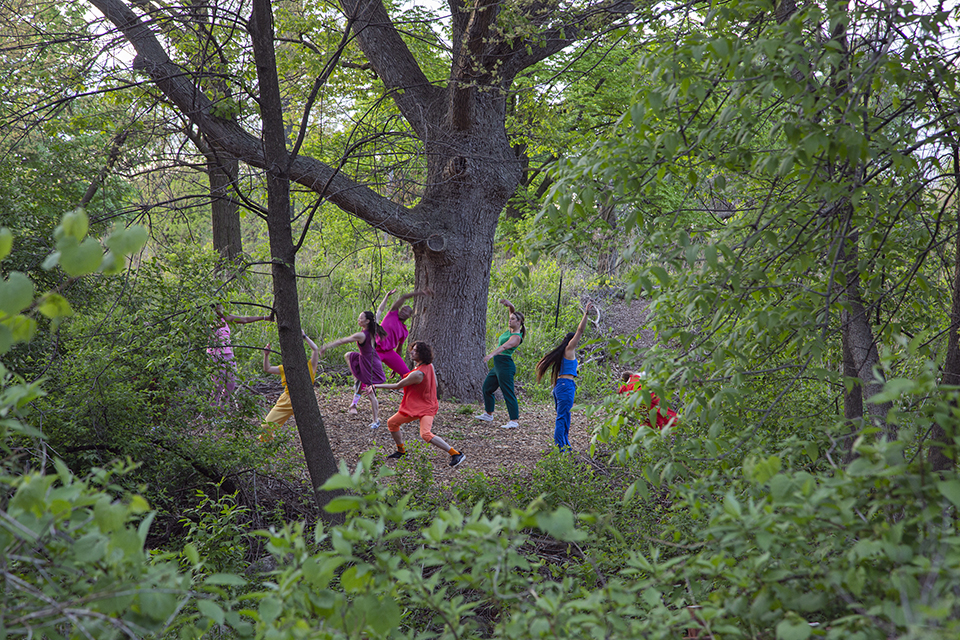
-
Photo by Eddee Daniel.
